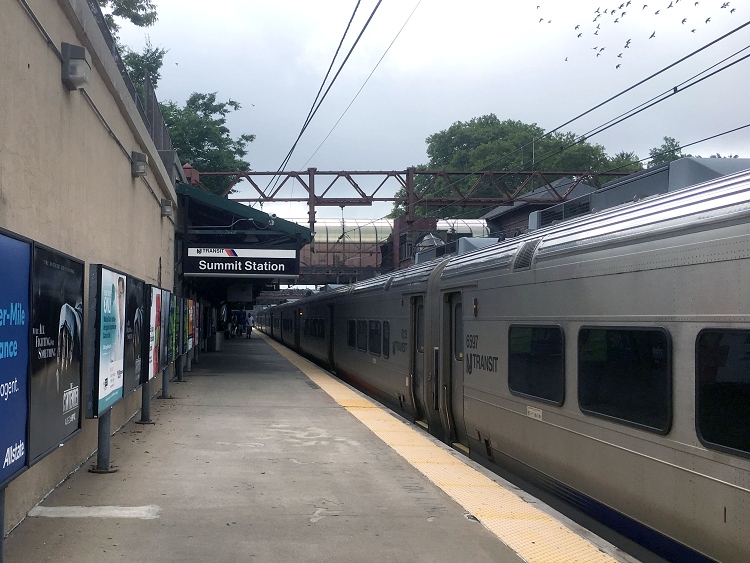Replacement and Relocation of West Summit Interlocking
Project Description
NJ Transit's Summit Interlocking provides switching capabilities for trains operating on the Morristown and Gladstone Lines where the two merge in Summit, NJ. Due to the rail operations on these lines, some trains must reverse direction at Summit Station. The original interlocking could not accommodate a train longer than six cars and therefore, forced the train to occupy the interlocking while stopped at the station for as much as one hour or more during peak travel hours. This prevented utilization of the switches for other movements, and service at the station was disrupted. The newly configured interlocking improves efficiency and availability of train service at Summit by allowing longer trains through the station through service on three tracks. This in turn reduced congestion on the line and provided the additional support for future train services.
Screening procedures for a commuter rail station, outlined within the FTA's Transit Noise and Vibration Impact Assessment guidance manual (FTA-VA-90-1003-06, May 2006) were implemented. Noise and Vibration General Assessments were performed to predict potential operational and construction impacts.
The General Noise Assessment for operational impacts was conducted based on FTA guidance documents and the utilization of the FTA Noise Impact Assessment Spreadsheet. Long term 24-hour field measurements at four representative sites were conducted to determine the existing noise exposure at analysis locations in the project area as well as source measurements of an idling locomotive to represent proposed idling on pocket tracks.
To assist in predicting operational vibration levels under the General Vibration Assessment, FTA guidance was used, and vibration measurements were performed at a nearby station with an identical interlocking to the one proposed in Summit. Measured vibrations levels were then propagated to sensitive receptors within the study area and compared to the existing vibration levels to determine the degree of impact.
Construction related impacts were also assessed under FTA guidelines. Using preliminary engineering information, PCA was able to complete a construction noise and vibration analysis using Federal Highway Administration's Roadway Construction Model (RCNM) and FTA's guidance document to predict levels from construction activity at sensitive receptors within the project area.
Union County is in CO and PM2.5 maintenance and O3 nonattainment. Since the project was listing in an approved Statewide Transportation Improvement Program (STIP) the project was exempt from regional air emissions modeling. Project-level conformity was addressed qualitatively as the project would not result in a significant increase in the number of diesel vehicles congregating at a single location and would not introduce additional vehicle trips to the station.
